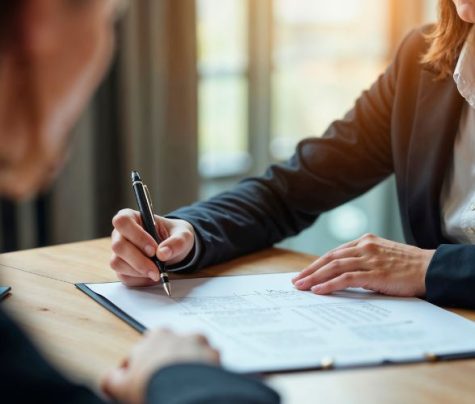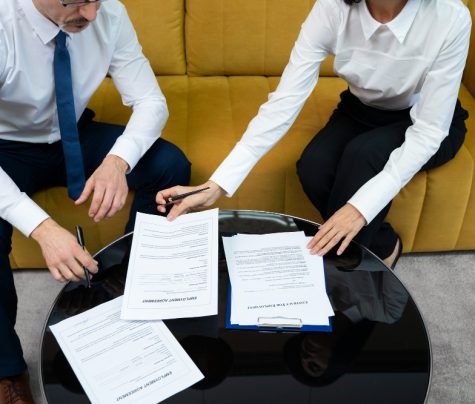
Hey! Odd question, but we all know what personal injury claims are, right? Injury claims arise from situations like
- Car accidents
- Slips and falls
- Medical mistakes
- Other unintentional harms
These injuries carry steep costs – over $1 trillion per year in the United States alone, highlighting the importance of working with the best personal injury lawyer you can get in order to seek fair compensation.
Did you know? Motor vehicle crashes make up the largest share at 52% of personal injury claims, followed by slip and fall incidents and medical malpractice.
Furthermore, Thousands die annually from preventable accidental injuries. In 2023, falls caused 31% of accidental deaths for women, while men suffered more transportation-related fatalities.
However, proving liability and damages requires gathering solid evidence. Therefore, attorneys must build a convincing case with various types of evidence to prove their client deserves compensation.
What is the role of evidence in personal injury claims? How can you get this evidence? I will tell you all about it in this article.
What Is The Role Of Evidence In Personal Injury Claims?
Ah! The million-dollar question! You see, evidence plays a very important role in personal injury claims.
It is used to determine whether the other party acted intentionally or was merely negligent. It also provides us with a clear understanding of who is actually responsible for the accident.
When you have strong evidence at your disposal, it can help you make strong negotiations and use them as leverage.
What Are The Types Of Evidence?
In a personal injury claim, you need evidence to prove the accident happened, that you were injured, and that the other party is liable.
Therefore, this evidence can include medical records, police reports, and witness statements. Furthermore, they also include
- Photos
- Videos of the accident scene
- Expert testimony
Let’s take a deeper look at it:
1. Police Reports And Accident Reports
Accident reports and police officer reports are official documents that provide detailed information about an incident.
These reports typically include key details such as the time, date, and location of the accident, as well as the names and contact information of those involved.
This is a little complex, you see, police reports cannot be used as evidence in court. However, they can be helpful when you are supporting an insurance claim.
Additionally, these reports may also include witness statements and the officer’s notes about what happened.
2. Medical Treatment Records
Medical records are an important type of evidence in personal injury claims. These provide objective documentation of
- Injuries
- Treatments
- Medical expenses
Furthermore, they help establish causation and support compensation calculations. You can also use these records to verify claims during the insurance process.
Medical records also prove that an injury occurred and the extent of the injuries, making them vital for a successful claim.
3. Witness Statements
Medical records are a crucial type of evidence in personal injury claims, providing objective documentation of injuries, treatments, and medical expenses.
They help establish causation, support compensation calculations, and verify claims during insurance processes.
Medical records also prove that an injury occurred and the extent of the injuries, making them vital for a successful claim.
4. Expert Testimony
Experts carefully examine all important information, like medical records, accident reports, and workplace safety measures.
They make their conclusions based on facts and their professional judgment, without being influenced by the interests of the party that hires them.
Role Of Evidence In Personal Injury Claims: The Guiding Steps
I suppose you have understood how to establish the role of evidence in personal injury claims; we now need to examine the steps you must take to ensure the correct evidence is present.
If you don’t have strong evidence, you will find that proving a personal injury claim becomes significantly more challenging, potentially limiting your chances of receiving fair compensation.
Therefore, you need to follow these steps very carefully to ensure that you have all the correct and authentic evidence ready for use.
1. Gather Evidence From The Scene
Attorneys act quickly to collect evidence from the accident scene. Photographing and diagramming the area helps recreate the events that occurred.
Moreover, they measure skid marks on roads, examine floors for defects, test stairs for safety, photograph injuries, and perform other related tasks.
Furthermore, Police reports provide official documentation of the site. Gathering this evidence fast is crucial before conditions change.
You can also try to secure video footage from nearby security cameras. This will provide an unbiased record of events.
2. Obtain Medical Records
Medical records prove the client’s injuries and help determine if they will have ongoing issues. An experienced lawyer will obtain records such as
- Ambulance run sheets
- Hospital charts
- Rehabilitation notes
- Diagnostic test results
What will these documents help you with? These documents outline the diagnosis and treatment plan for you.
Moreover, they will also provide a prognosis and associated costs. They contact all healthcare providers involved to paint a complete picture.
Furthermore, Medical evidence is important for accurately pointing out:
- Quantifying pain
- Lost wages
- Associated expenses
Records are obtained through subpoenas and written requests.
3. Secure Eyewitness Statements
Eyewitness accounts help establish liability. Attorneys act quickly to identify and interview witnesses before memories fade.
Moreover, written statements detailing what witnesses saw and heard are invaluable. Police may interview witnesses on the scene.
Therefore, Attorneys can later contact witnesses to answer additional questions. Furthermore, they compare accounts to piece together a timeline and uncover inconsistencies. Witness credibility is scrutinized.
4. Use Expert Testimony
Experts provide opinions on technical matters based on their specialized knowledge and experience. Their testimony can link negligence with injuries and damages.
Moreover, Accident reconstructionists analyze vehicle damage, skid marks, and other evidence to determine what occurred.
Furthermore, Medical experts have confirmed that the injuries were caused by the incident, as evidenced by diagnostic results.
Economists calculate lost income and future costs; the economic cost of fatal crashes is approximately $417 billion per year.
Therefore, Experts must provide unbiased opinions grounded in facts. Their credentials and expertise give weight to their conclusions.
5. Submit Evidence Effectively
If you can skillfully present evidence, it makes a winning case. Attorneys strategically highlight the most compelling facts through exhibits, visuals, and demonstratives.
They tell an engaging story that leaves no doubt about the defendant’s liability. Powerful evidence properly submitted can lead to a favorable verdict or settlement.
With thorough evidence gathering and presentation, attorneys prove their client deserves maximum compensation.
Although the average settlement is $6,551, it can be substantial for serious injuries and wrongful death claims.
The Importance Of The Role Of Evidence In Personal Injury Claims
If you are building a personal injury case, it hinges on evidence. As Attorneys, you must act swiftly yet strategically to gather all relevant evidence.
You will need to analyze each piece carefully to construct a cohesive narrative. Always remember that Key evidence is effectively presented.
As an attorney, when you leverage strong evidence, you can maximize your clients’ recovery in even the most challenging cases.
If you can provide proof, it transforms an incident into a valid legal claim. With dedication and diligence, attorneys gather evidence to bring justice to their injured clients.
Read Also:
- Surprising Factors Influencing the Outcome of Personal Injury Cases
- How Medical Negligence Cases Have Evolved and How Lawyers Adapt
- The Ultimate Personal Injury Dos and Don’ts Guide: What You Need to Know











0 Reply
No comments yet.